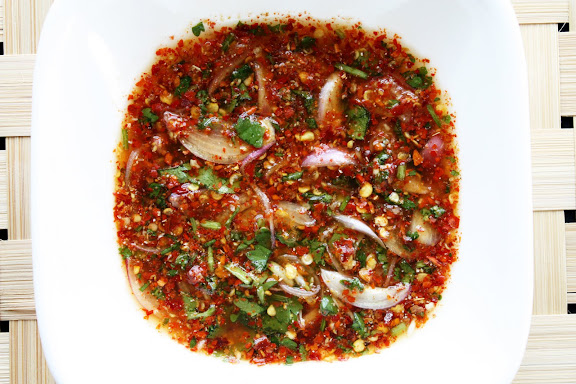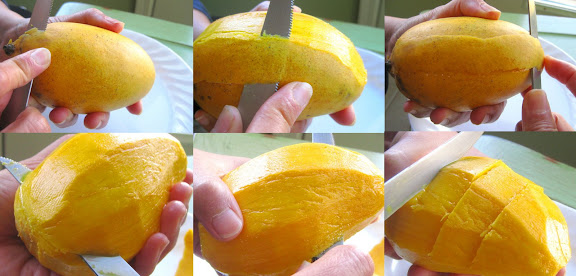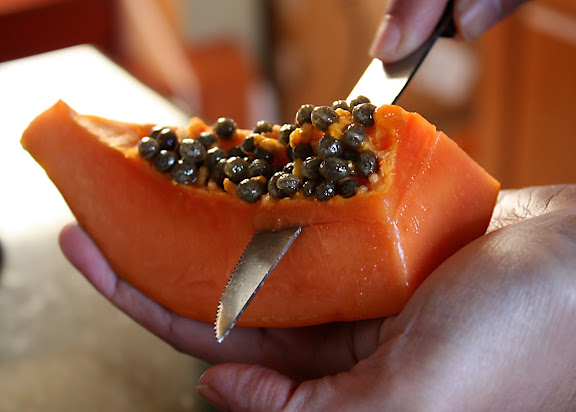
In Thailand, when you buy Gai Yang (grilled spatchcocked chicken) or Mu Ping (Skewered grilled pork), the vendor almost always gives you two kinds of Nam Jim or dipping sauces to take home along with the grilled protein. One, of course, is the indispensable sweet and tangy chilli sauce; the other is one of the many varieties of the smokier, less sweet dipping sauce, Jaew (แจ่ว).
Though not as well known internationally as its sweeter cousin, Jaew is no less a favorite among Thais. This explains why two kinds of dipping sauces accompany every grilled meat purchase — to eliminate the agony which customers would otherwise have to go through in choosing one or the other.
It’s difficult to pin down the definitive Jaew recipe since every family has their own way of making it. One thing, however, remains constant: just as the sweet chilli sauce is always made of fresh red chillies, Jaew is always made with dried red chillies. Traditionally, the chillies are lightly toasted over open flame and pounded into tiny flakes. Fresh galangal, another traditional ingredient, is prepared the same way. Then, true to its northeastern origin, toasted rice powder is also a required ingredient in many family recipes. The herbs and aromatics then go into a mixture of fish sauce, lime juice, and sometimes palm sugar. As you can see, Jaew, for all intents and purposes, is the dressing for Laab (Larb or Lahb) – (ลาบ) even though most people wouldn’t see it that way.
- ¼ cup thinly sliced shallots
- ¼ cup finely chopped cilantro
- ½ teaspoon galangal powder, optional
- ⅓ cup fish sauce
- Juice of one lime
- 2 teaspoons grated palm sugar (or brown sugar)
- 1 tablespoon of toasted rice powder (Khao Khua ข้าวคั่ว)
- 1 tablespoon of dried red pepper flakes (coarsely ground).
- Mix everything together in a bowl.
- Adjust the taste with more fish sauce, lime juice, or sugar, if necessary. The sauce should be predominantly sour and salty.

















